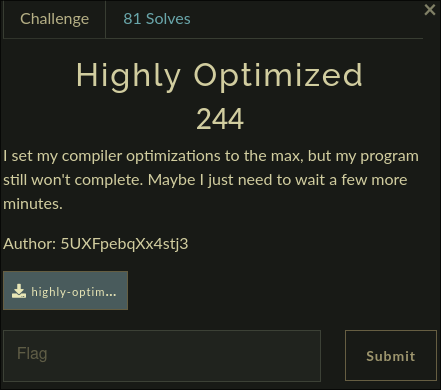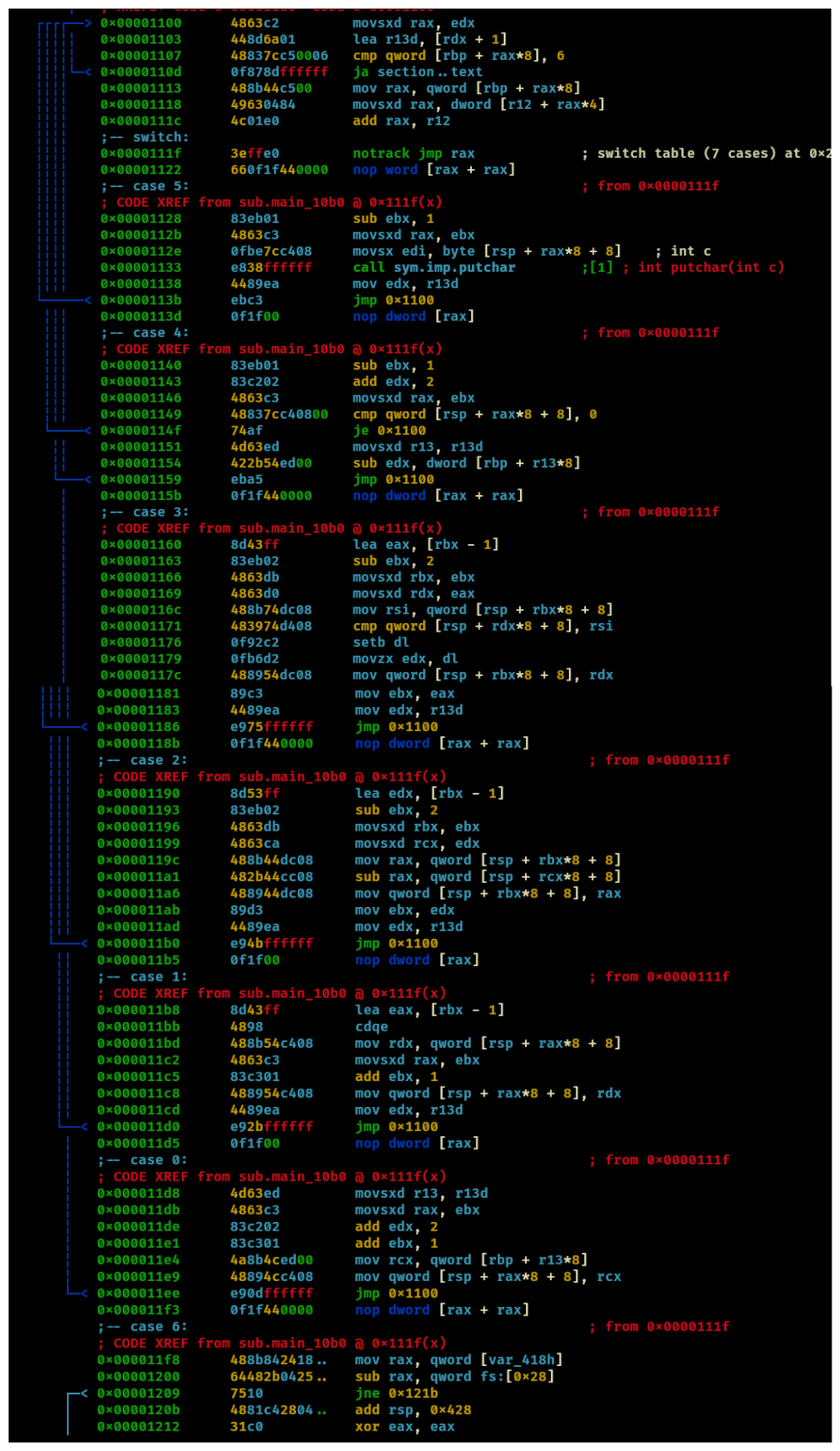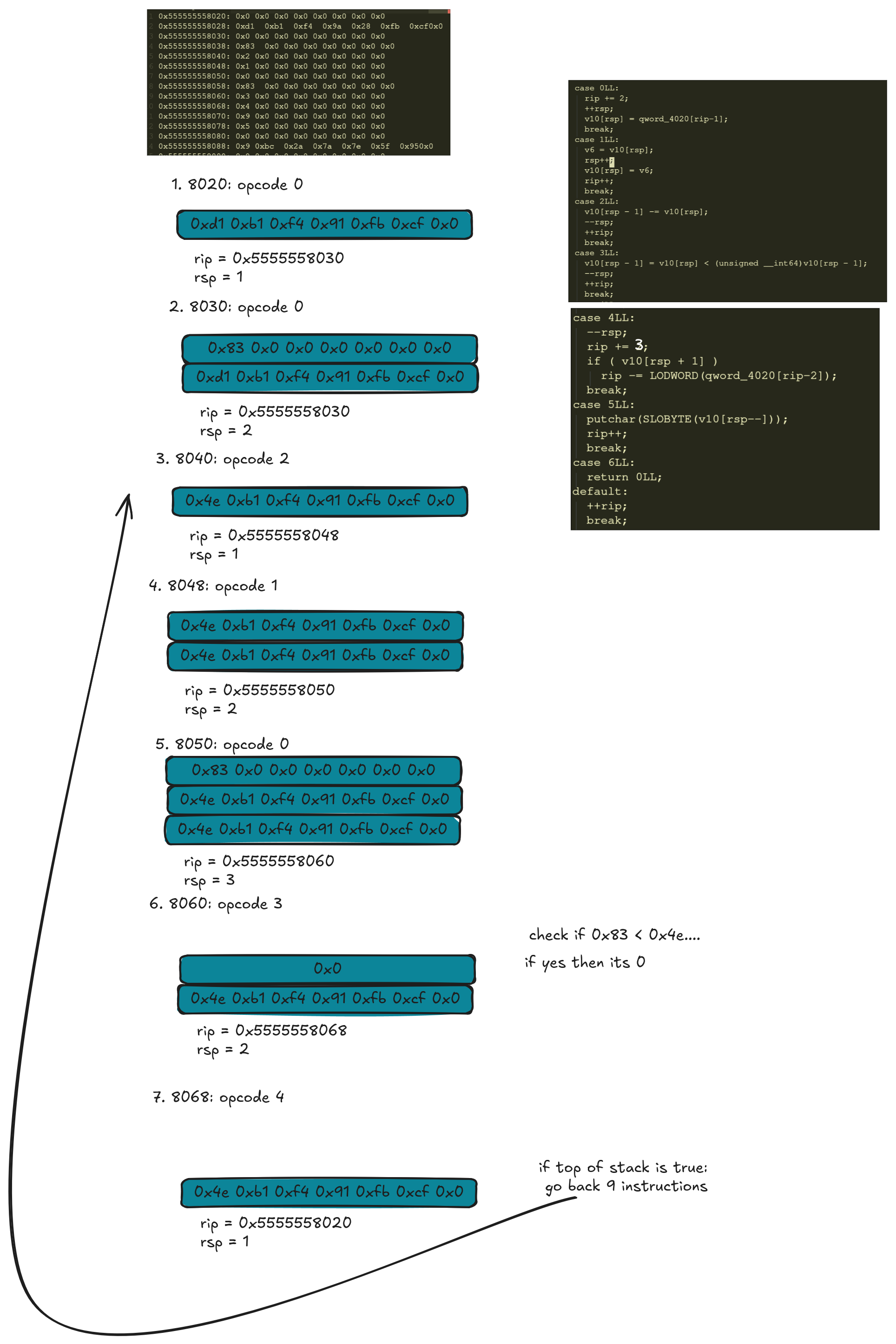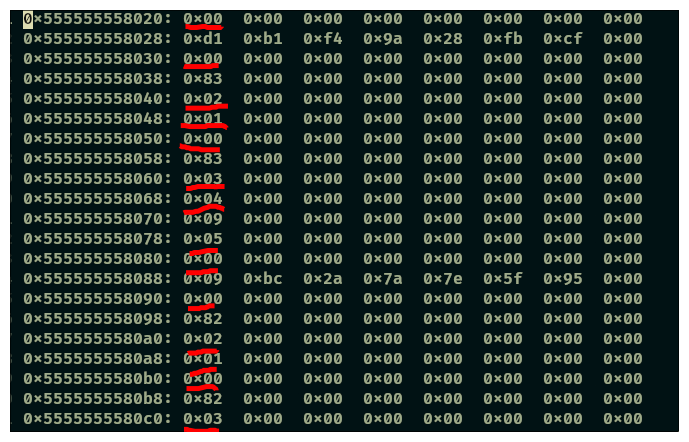UoftCTF 2025
Challenges
Highly Optimized
Solved with SadraChallenge Info

Recon
 Running the challenge results in an infinite wait. We need to see what is happening with a debugger.
Running the challenge results in an infinite wait. We need to see what is happening with a debugger.
We notice that the program is consistenly jumping back to the same address point 0x55555555555100
 When it jumps back to that codeblock, it performs a cmp of an address space [rbp + rax*8] with 6 and then does a notrack jmp to the address at rax
When it jumps back to that codeblock, it performs a cmp of an address space [rbp + rax*8] with 6 and then does a notrack jmp to the address at rax

Radare2 Disassembly
 So, there appears to be a switch statement for cases 0-6. after each case it jumps back to 0x55555555555100. rax is the one being switched-on. From what we can tell, the value that RAX takes is an address relative to an initial address stored at rbp
So, there appears to be a switch statement for cases 0-6. after each case it jumps back to 0x55555555555100. rax is the one being switched-on. From what we can tell, the value that RAX takes is an address relative to an initial address stored at rbp
Lets dump that segment of memory. You can do this by:
set height 0set logging onx /2000s 0x200000000quit
Do you see the numbers 0,2,3,5? these correspond to the cases in the switch statement. If you keep reading the dump you willa also find 0x06 saved in a memory region.
Now, we know that rax points to these switch codes that are stored in the memory region, we need to understand what each swich code does. We can read the disassembly, but I think it would be easier to read a decompiled form instead.
//----- (00000000000010B0) ----------------------------------------------------
__int64 __fastcall main(int a1, char **a2, char **a3)
{
int v3; // ebx
int v4; // edx
int v5; // r13d
__int64 v6; // rdx
__int64 v7; // rax
__int64 v8; // rax
__int64 v10[137]; // [rsp+0h] [rbp-448h] BYREF
v3 = 0;
v10[131] = __readfsqword(0x28u);
puts("I will tell you the flag, if you don't mind waiting a few moments...");
memset(v10, 0, 0x410uLL);
v4 = 0;
while ( 1 )
{
v5 = v4 + 1;
switch ( qword_4020[v4] )
{
case 0LL:
v8 = v3;
v4 += 2;
++v3;
v10[v8 + 1] = qword_4020[v5];
break;
case 1LL:
v6 = v10[v3];
v7 = v3++;
v10[v7 + 1] = v6;
v4 = v5;
break;
case 2LL:
v10[v3 - 1] -= v10[v3];
--v3;
++v4;
break;
case 3LL:
v10[v3 - 1] = v10[v3] < (unsigned __int64)v10[v3 - 1];
--v3;
++v4;
break;
case 4LL:
--v3;
v4 += 2;
if ( v10[v3 + 1] )
v4 -= LODWORD(qword_4020[v5]);
break;
case 5LL:
putchar(SLOBYTE(v10[v3--]));
v4 = v5;
break;
case 6LL:
return 0LL;
default:
++v4;
break;
}
}
}
To summarize:
- there is a counter variable v4 that indexes qword_4020
- qword_4020 is the memory range pointed to by rbp
- there is a temporary stack v10
- it performs a switch statement on the value at qword_4020[v4]
- switch code 0 pushes the value located at the next address (qword_4020[v4+1]) onto the top of the temporary stack v10 and increments v4 by 2
- switch code 1 duplicates the value on the temporary stack v10 and increments v4
- switch code 2 subtracts the two topmost alues on stack v10. (v10[top-1] -= v10[top]) and increments v4
- switch code 3 compares to see if the v10[top] < v10[top-1] and increments v4 and adds 0 to top of stack if its true
- switch code 4 checks if top of stack is 0 and then changes v4 = v4 - qword_4020[v4+1]
- switch code 5 prints the topmost value of the stack
- switch code 6 exits the program
If we want to visualize this we can:

In other words, what the program is doing is perpetually subtracting the second pushed value from the first pushed value until its smaller than the second pushed value.
 After its smaller than the second pushed value, we print that character to the screen.
After its smaller than the second pushed value, we print that character to the screen.
We can write a script to tell us the characters we get from doing this:
print(chr(0x00cffb289af4b1d1 % 0x83), end="")
print(chr(0x00955f7e7a2abc09 % 0x82), end="")
print(chr(0x0171d0eef6e34564 % 0x92), end="")
print(chr(0x01c8c0106f982d2c % 0x78), end="")
print(chr(0x01a3df010db43d50 % 0x79), end="")
print(chr(0x0070d52b655429d4 % 0xa0), end="")
print(chr(0x0086ba083db4a00e % 0x8f), end="")
print(chr(0x01ee6d244821e17e % 0x93), end="")
print(chr(0x021f3e25788406b2 % 0x8a), end="")
print(chr(0x013c0021e70d77b4 % 0xa3), end="")
print(chr(0x027edd2385f658c6 % 0xaa), end="")
print(chr(0x00a07da21ef9e1b4 % 0x34), end="")
print(chr(0x00d00e8519e9cc06 % 0x41), end="")
print(chr(0x00d6dfc3f1e11375 % 0x78), end="")
print(chr(0x00efaa53300da663 % 0x8d), end="")
print(chr(0x007568123db27db8 % 0x89), end="")
print(chr(0x00f174602422164a % 0x87), end="")
print(chr(0x009b991d46e343ee % 0x75), end="")
print(chr(0x0016c43fb0f9b780 % 0x44), end="")
print(chr(0x010c7b1796d09c04 % 0x44), end="")
print(chr(0x005f5cfcf58c8717 % 0x7a), end="")
print(chr(0x00d715fda1220ce0 % 0x93), end="")
uoftctf{vmr00m_vmr00m}

Zettelkasten












